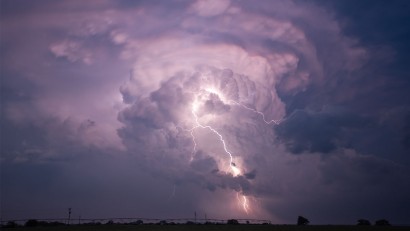- 1. What to Eat after Hiking
- 1.1. Fruit
- 1.2. Protein
- 1.3. Complex Carbs
- 1.4. Healthy Fats
- 2. How to Rehydrate after Hiking
- 3. What Helps with Soreness after Hiking?
- 3.1. Turmeric
- 3.2. Massage
- 3.3. Epsom salts
- 3.4. Deep Breathing
- 3.5. Movement
- 3.6. Stretching
- 3.7. Ice Bath
- 4. After-Hike Stretches
- 4.1. Hamstring Stretch
- 4.2. Frog Stretch
- 4.3. Lunge Stretch
- 4.4. Ankle Stretch
- 4.5. Pigeon Stretch
- 5. How to Relax after a Long Hike
- 6. Combat the Post-Hiking Fatigue with KÜHL
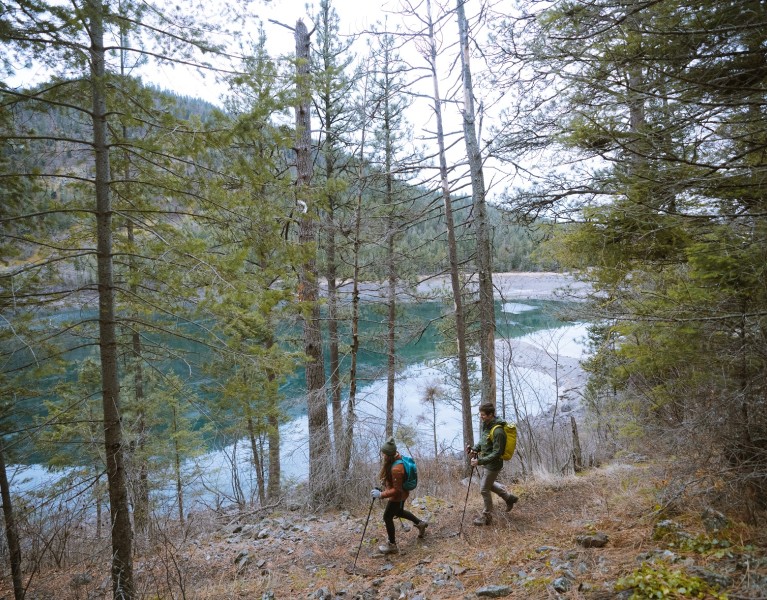
Defeat Post-Hiking Fatigue: How to Recover from a Long Hike
Table of Contents [Show]
Being in nature helps improve mental well-being and sparks creative ideas. To be with nature is essentially what it means to be human. Going for a hike or, as John Muir would say, ‘to saunter,’ is one of the best ways to appreciate nature.
Hiking has amazing health benefits for our mind, body, and soul. It not only offers beautiful scenery, but it also provides you with a complete workout. When you head out for a long nature hike, the forests and mountains instantly become an obstacle course. With steep winding trails to climb, fallen trees to hop over, rushing streams to navigate, and boulders to scramble over, you quickly begin to feel the full effects of putting your muscles to work.
After many miles of hiking, you may feel extremely sore and worn out. That means you’re building muscle and growing stronger, but it also means you need time to recover. When you’ve finished your hike, it’s crucial to take care of your aching and sore muscles by stretching, eating the right foods, hydrating, and relaxing.
In this post, you’ll get an in-depth look at how to recover from a long hike. With a proper hiking recovery routine, you can defeat, or at least soothe, the post hiking fatigue.
What to Eat after Hiking
When thinking about how to recover from a long hike, it's important to take into account both your mind and your body. Your body needs proper food to replenish the loss of nutrients. Your mind, on the other hand, may trick you when you’re in relaxation mode, to go for the sugary sweets and snacks while you lounge on the couch binge-watching your favorite show.
Sweets and snacks are just fine in moderation, especially when you’re hungry after a hike, but they won’t help you recover after an arduous trek. You need essential proteins, carbs, vitamins, and nutrients for sufficient recovery. Great options include the following:
Fruit
Fruits are high in vitamins and minerals and provide many of the nutrients your body needs after working hard.
Dates are great for a post-workout snack because they contain high traces of natural sugars and carbs that boost energy levels while helping our body recover. Grapefruit is high in vitamin C and helps aid our muscles to heal. Tomatoes carry important anti-inflammatory antioxidants.
Don't forget bananas! Bananas contain high amounts of fast-acting carbs to help rebuild damaged muscles, and they are packed with potassium to help reduce inflammation.

Try this post-hike recovery Banana Smoothie:
Ingredients:
- 1 banana
- 1 date
- 1/2 cup of milk (or substitute)
- 1/3 cup fresh or frozen blueberries
- 1/3 cup fresh or frozen strawberries
- 1 tbsp hemp hearts
- 1 tbsp almond butter
- 1/4 cup rolled oats
Directions:
Mix all ingredients in a blender to desired consistency.
Protein
When your muscles are sore and aching after a vigorous hike, they're telling you that your body needs protein. Protein is vital for muscle recovery after pushing your body to its limit, so treat yourself to a good meal.
Fish are a great source of protein and contain high levels of omega-3 fatty acids to help reduce inflammation. Eggs are a complete protein and provide us with all nine essential amino acids our bodies need. Chickpeas, edamame, and green peas are terrific choices of plant protein that can be introduced in many different dishes. Don't forget legendary peanut butter!
Here are two amazing recipes to try out for a recovery meal.
Baked Salmon
Ingredients:
- 1 salmon fillet
- 1 cup wild rice
- 1-3/4 cup water
- 2 tsp olive oil
- 2 tsp salt and pepper
- 1 tsp paprika
- 1/2 tsp smoked paprika
- 1 tsp chopped thyme leaves
- one tsp chopped rosemary
- 1 tsp dried oregano
- 2 lemons thinly sliced
- Fresh parsley
Directions:
- Preheat oven to 350 degrees. Line baking sheet with foil, and grease with oil. Place lemon slices down center of the pan.
- Season salmon with salt, pepper, paprikas, thyme, rosemary, and oregano. Place on top of lemon slices.
- Bake for 20-25 minutes.
- Prepare wild rice according to package directions.
- Garnish salmon with parsley and enjoy!
- Serve with a side of roasted vegetables (asparagus, broccoli, or cauliflower).

Chickpea Edamame Salad
Ingredients:
- 1 cup edamame, cooked
- one cup quinoa, cooked
- 1 cup canned chickpeas
- 1/2 cup red pepper, diced
- 1/2 cup shredded carrots
- 1 bunch kale
- 2 tbsp olive oil
- 2 tbsp balsamic vinegar
- 1 tbsp lime juice
- 1 tsp salt and pepper
- Chopped cilantro for garnish
Directions:
- Tear kale into small pieces, discarding the stems, and massage with olive oil in a large bowl.
- Add edamame, quinoa, chickpeas, red pepper, and carrots. Mix in bowl until all ingredients are incorporated.
- Drizzle olive oil, balsamic vinegar, lime juice, salt, and pepper into a bowl. Mix everything together.
- Garnish with cilantro and serve as is. Or let it chill in the fridge for 10 minutes and serve cold.
Complex Carbs
Fiber-rich carbohydrates are essential for our bodies. They stabilize our energy levels by turning sugars into glycogen, which becomes the main fuel for our brain and muscles. Implement complex carbs into your diet after a long hike for proper nourishment.
Complex carbs are found in whole, natural, plant-based foods, such as beans, whole grains, sweet potatoes, squash, quinoa, vegetables, fruit, and more. Here are two recipes you can easily make for those much-needed carbs.
Whole Grain Pesto Pasta
Ingredients:
- 1 box whole-grain spaghetti
- 1/3 cup cherry tomatoes, halved
- 2 tbsp pine nuts
- 2 tbsp grated parmesan cheese
- 1 cup fresh basil leaves
- 1/3 cup olive oil
- 1/2 garlic clove
- Salt and pepper to taste
Directions:
- Add pine nuts, olive oil, garlic, basil leaves, parmesan, salt, and pepper to a blender. Blend together for 2-3 minutes until smooth.
- Bring water to a boil in a medium pot, add pasta, and salt. Cook for 10 minutes.
- Drain water from pasta, add to a bowl, and pour the pesto sauce over the pasta, mixing well.
- Cut cherry tomatoes in half and add to your pasta.
- Serve and enjoy warm!

Chia Seed Pudding
Ingredients:
- 2 tbsp chia seeds
- 1/2 cup coconut milk
- 2 tsp honey
- Fresh berries
Directions:
- Pour chia seeds, coconut milk, and honey in a jar and mix well.
- Cover the jar and let it sit in the fridge for up to 2 hours.
- Top with your favorite fruit and enjoy.
Healthy Fats
Healthy fats assist the process of absorbing vital nutrients our body needs to protect organs, support cell growth, and keep blood pressure under control. These fats help fight against inflammation in the joints and muscles while also kicking the brain into a clear state of mind. Healthy fats are a must, especially after a long and strenuous hike.
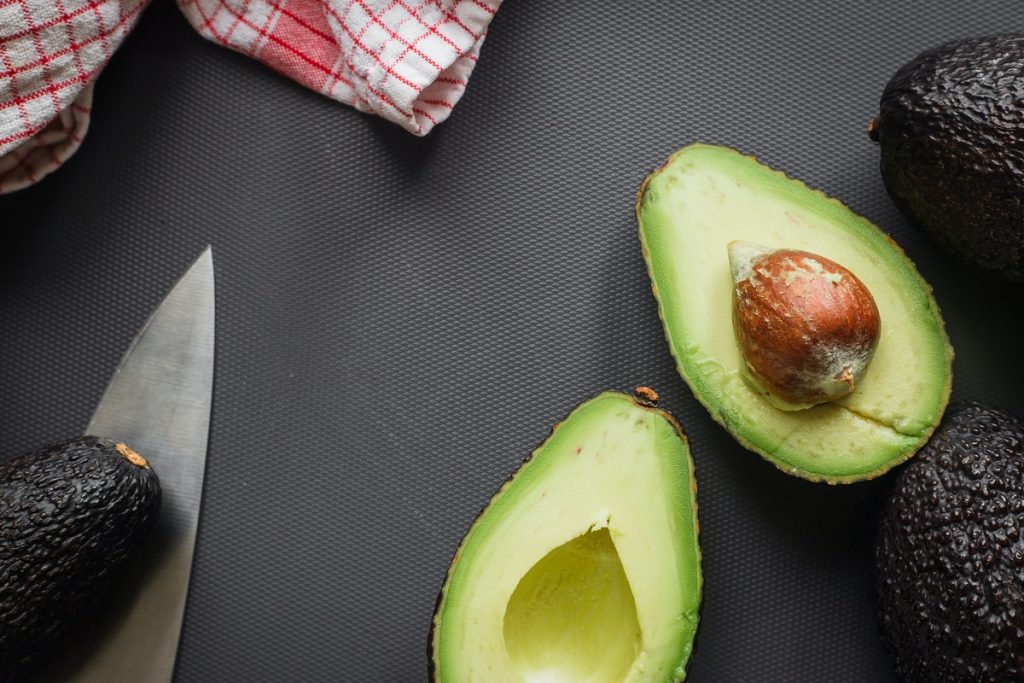
Great options include nuts, avocado, coconut oil, flax seeds, and pumpkin seeds. Check out this simple, yet satisfying, recipe to enjoy as a post-hike snack.
Fat Balls
Ingredients:
- 1-1/2 cups raw almonds
- 1 cup shredded coconut
- 1/3 cup sunflower butter
- 1/4 cup cacao nibs
- 1/2 cup coconut oil, melted
- 2 tbsp maple syrup
- 1 tsp pure vanilla extract
- 1/2 tsp ground cinnamon
- 1/2 tsp salt
- 3 tbsp water
Directions:
- Add almonds to a food processor, and process until finely chopped. Add all the other ingredients, and blend together until everything is incorporated into a sticky paste.
- Roll out dough into small balls, enjoy, and store in the refrigerator for later use.
How to Rehydrate after Hiking
Hydrate, hydrate, hydrate! It is one of the, if not the, most important things you can do for your body after hiking or any physical activity. In fact, it’s advised to drink at least eight cups of water each day for the next few days after your hike. Mind fog, cramping muscles, dizziness, decreased energy and dry mouth are all symptoms of dehydration. If you feel any of these symptoms, it’s time to listen to your body and rehydrate.
There are a few different ways to rehydrate after a hike. Other than drinking water, snack on fruits, such as watermelon, oranges, cantaloupe, grapes, and pineapple to replenish any loss of electrolytes. Coconut water is another delicious option that is packed with electrolytes, will moderate your blood sugar, and keep you hydrated. Here is a good option for anybody looking to stay hydrated after a hike:
Refreshing Cucumber Water
Ingredients:
- 2 cucumbers, sliced
- 1/2 tbsp chia seeds
- 1 tsp apple cider vinegar
- 3 limes, juiced
- 2 tsp pink Himalayan salt
- 3 fresh basil leaves (optional)
Directions:
- Pour all ingredients in a large mason jar, fill with water and mix well.
- Store in the fridge, and let all ingredients fuse together for at least one hour or until water is chilled.

What Helps with Soreness after Hiking?
It is completely normal for your entire body to feel sore after a long hike, but there is a difference between soreness and pain. If you're feeling pain then you should rest, drink plenty of water, eat well, and if the pain persists after a few days, consult with your doctor.
If you're dealing with achy soreness, here are a few things that can help with soreness after hiking:
Turmeric
Turmeric is a root that contains a compound within its molecular structure that has powerful anti-inflammatory effects. Add turmeric to dishes, drinks, or juices to soothe sore muscles and joints. One popular option is to make golden milk. This warm, sweet, healing drink will make your body feel at ease. Here’s how to make your own golden milk paste:
Ingredients:
- 4 tbsp ground turmeric
- 2 tsp ground black pepper
- 2 tsp ground cinnamon (optional)
- 1-2 tbsp hot water
Directions:
- Add turmeric, pepper, and cinnamon to a pot with hot water. Stir and combine ingredients until a paste forms. Add more water if it’s too dry; add more ground turmeric if it’s too wet.
- Make warm golden milk by heating up 1 cup of milk and mixing in 1.5 tsp of the golden milk paste. Add honey or maple syrup to sweeten. Store the rest of the paste in the fridge for later use.
Massage
Getting a massage after a hike is a great way to relax and tend to any sore muscles that are giving you trouble. See a massage therapist, ask a loved one, or give yourself a massage using a foam roller. The foam roller is a massage device that can increase blood flow and provide faster recovery of your tired muscles. Trail runners, hikers, and backpackers use foam rolling to reduce hiking soreness. Your hands with a CBD salve can also relieve soreness well.
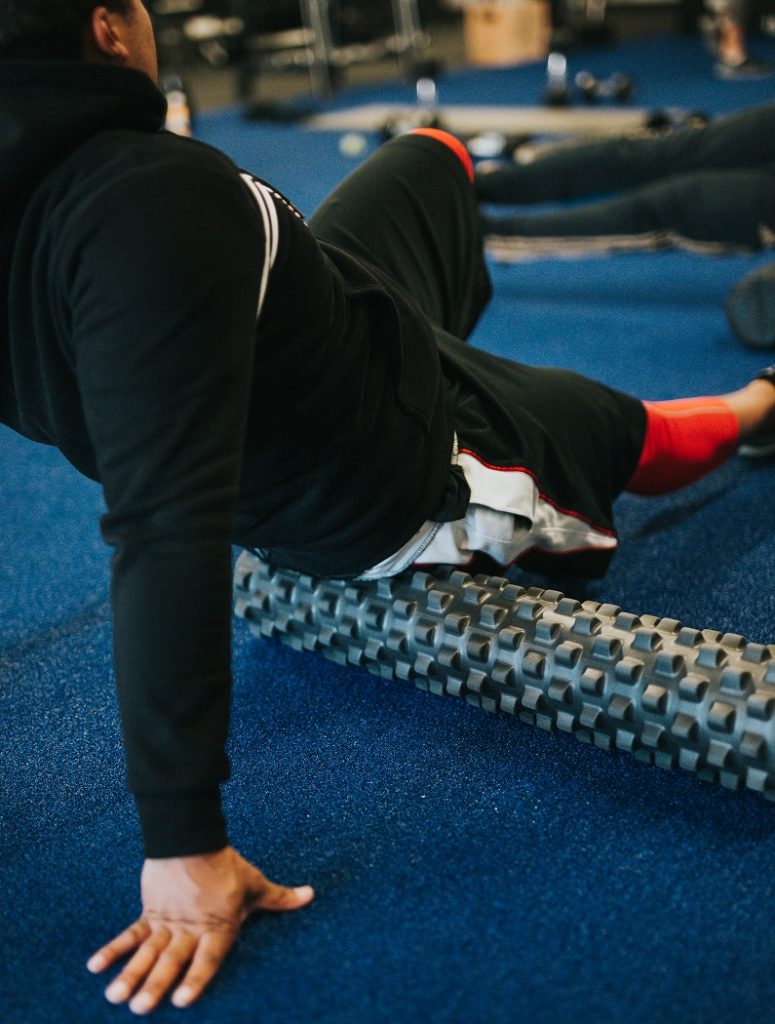
Epsom salts
Epsom salt, or magnesium sulfate, is a salt that dissolves into water to create a comfortable, relaxing, and soothing bath. Magnesium helps prevent any injury by loosening tight muscles and calming the mind. Just remember that epsom salt is not table salt; it’s used only for external purposes.
Deep Breathing
Deep breathing will help your body relax to make you feel more at ease. Breathing exercises help regenerate your nervous system and aid in muscle recovery by relaxing tense nerves. One important thing to remember is to breathe deeply into your ribs, not your chest or your belly. As you breathe in, make sure your ribs are expanding outwards and they retract when breathing out. It’s important to breathe into the diaphragm with a straight spine. Here’s a quick and easy exercise for relaxation:
- Begin by sitting straight or lying down comfortably with arms to your side and legs uncrossed.
- Gently breathe in through your nose for a count of four.
- Hold this breath for another count of four.
- Gently exhale for a count of four.
- Repeat for at least five minutes.
- Rest.
Movement
It’s rather tempting to lay in bed or sit on the couch and lounge for hours after actively moving your body, but this may hinder your recovery phase. To help with sore muscles, perform light movements to keep your body limber. Good ideas for active recovery are a light jog, swimming, or yoga.

Stretching
Stretching is one of the most important things you can do to relieve any soreness from hiking. You should always warm up your body before stretching by doing light movements. Stretch the parts of the body where you feel most sore, and hold for at least 15 seconds. Don’t overdo it. If you can’t reach your toes, that’s perfectly fine, but go as far as your body allows. If you feel pain, then stop, and don’t go any further. Stretching is not meant to be painful.
Ice Bath
An ice bath may not sound appealing if you’ve never taken one before, but they do wonders for the body. An ice bath is a terrific way to ease sore and aching muscles while resetting your central nervous system, making you feel better, and improving sleep quality.
After-Hike Stretches
Stretching should always be practiced after any physical activity or whenever your body is properly warmed up. The key is to listen to your body and stretch the muscles where you feel most of the soreness. Also, listen to your body for any form of pain. If you have pain, don't move any further into the stretch. Take it slow, holding stretches for no more than 30 seconds, and focus on your breath. Here are a few stretches that focus on muscles typically worked on when hiking.
Hamstring Stretch
Begin by sitting on the floor with your legs straight in front of you. Next breath in deeply, exhale and reach your arms forward toward your toes. Hold the position, and breathe in again. As you exhale, reach a little further to feel the full stretch. It’s okay if you can’t reach your toes, your ankles, or your knees. Focus on your breath, and feel the stretch within your hamstrings.
Frog Stretch
Begin on the floor on hands and knees. Slowly move your knees outwards. Bring your forearms to the ground. Bring your upper body down while pushing your hips back. Hold the stretch for 30 seconds to 1 minute, and focus on your breathing. This is a great stretch for tension relief in the hips and upper groin.
Lunge Stretch
Begin in a push-up position and slowly bring your right foot up next to your right hand. At the same time your left leg should slightly lift off the ground, and you’ll be in a low lunge position. Hold this stretch for 15 seconds, and repeat with the left side. If you need added stability then place your back knee down on the ground.
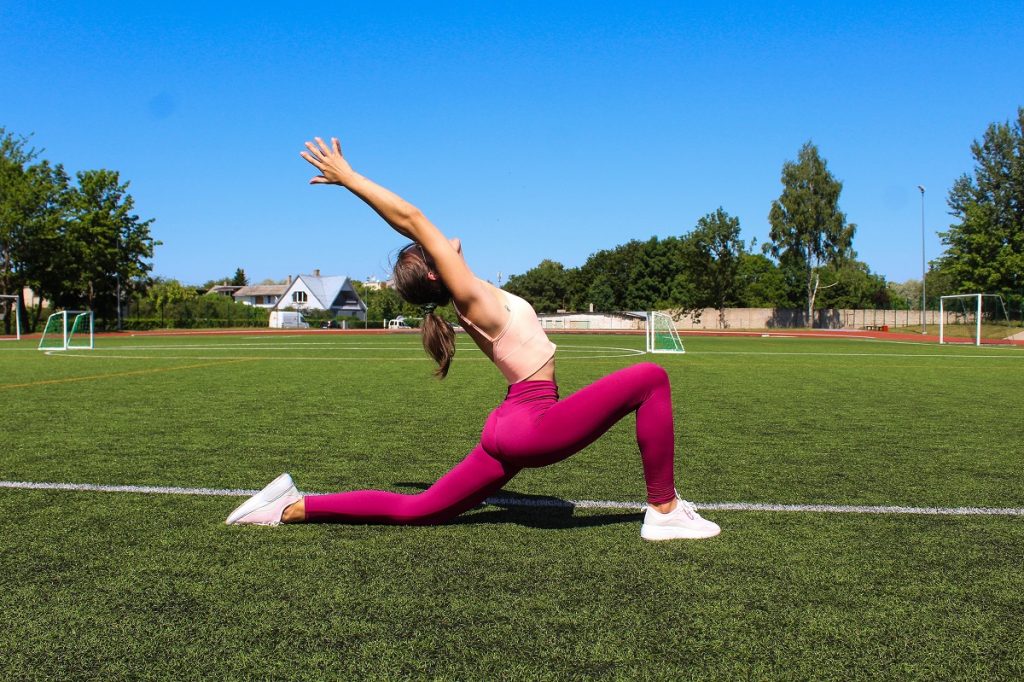
Ankle Stretch
Try this stretch sitting or standing. If standing, lift your heels off the ground, and stand on your toes for a few seconds. Repeat 10 times, and then do ankle circles going both ways for each ankle. If sitting, place your legs straight in front of you, and move your ankles towards you and then away from you. Finish with ankle circles.
Pigeon Stretch
Begin on your hands and knees in a tabletop position. Bring your right knee forward, and place it behind your right wrist. Place your right ankle in front of your left hip. Straighten your left leg behind you, making sure the left knee is straight. Gently lower yourself to the ground, and hold for up to 10 seconds. Repeat on the other side.
How to Relax after a Long Hike
You’ve accomplished an extensive hike that was incredibly rewarding, but a day after you are beyond worn out and can’t even think about lacing up your hiking boots again. So why not just sit back and relax? Maybe take a bath, light a few candles and read a book while sipping on herbal tea. Whatever you choose, it’s incredibly important to rest and invest time in post-hike recovery.
Here’s a list of great ways to enter relaxation mode:
- Drink herbal teas (chamomile, lavender, rose)
- Drink warm golden milk or hot cocoa
- Read a book
- Take a warm bath or shower
- Enjoy a massage
- Start a puzzle
- Meditate and practice yoga
- Deep breathing
- Nap in a hammock
- Paint
- Listen to calming music
- Walk around barefoot outside
- Watch a nature documentary
- Sleep

Combat the Post-Hiking Fatigue with KÜHL
For every long, strenuous hike there comes a time when it will end. To make sure you’re able to get back on the hiking trail again, it’s important to follow certain steps so your body recovers properly.
Remember to eat nutritious meals full of healthy fats, whole grains, and protein. Drink plenty of water, and eat fruits to replenish the loss of electrolytes. Tend to any sore muscles with yoga, massages, and stretching. Don’t forget to relax! As long as you listen to what your body needs and attend to those needs, you’ll be ready for your next adventure.
Don't forget to check out How to Train for Hiking and How To Prepare For Your First Hike. Smart preparation can do miracles for your hiking shape and overall experience. Also, see What To Eat Before a Hike to make sure you'll have enough energy throughout the day. The right gear is another important factor - wear quality hiking boots to minimize the impact on your feet and top-notch hiking gear for on-trail comfort and performance.


